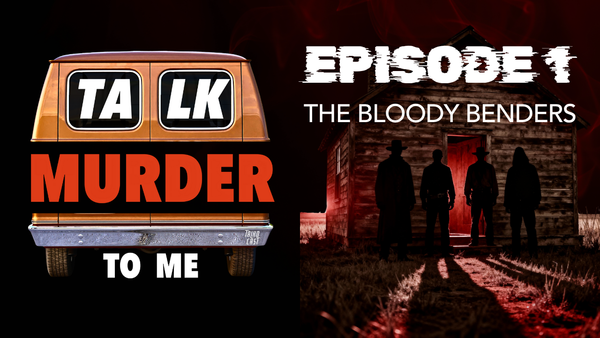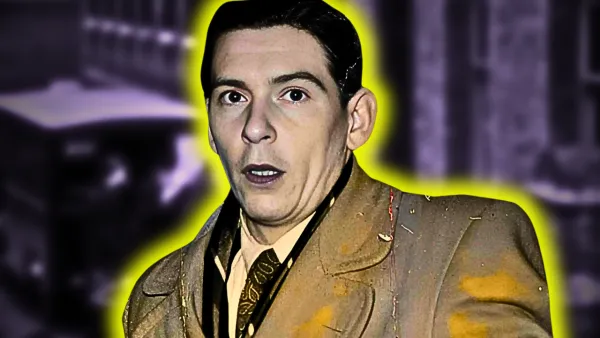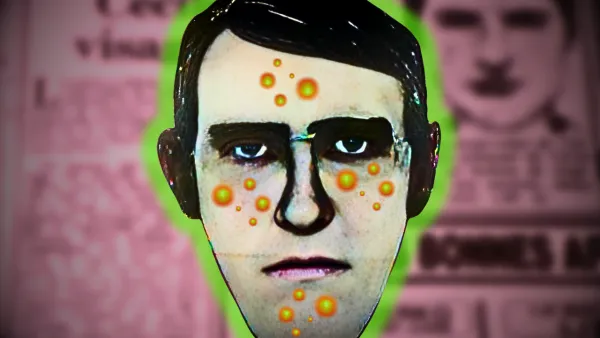The Starry Night Santa Claus Robbed The Bank And Killed Two Men

"This is a Ho Ho Holdup! Everyone, get on the f**king ground!"
Garland Sheridan looked down at his watch — it read 11:02. He had just arrived at the Canadian Imperial Bank, beating the lunch rush, and if he was quick, he could probably find a prime spot at the mall before the Friday crowd.
He made his way to the front counter, brushing shoulders with a man who seemed also in a hurry. “Pardon,” said the man in French. “Rein,” replied Sheridan — meaning “it’s nothing”.

Sheridan gave the man a quick glance and was immediately taken aback; not because the man was sporting a full-tailored Santa Claus suit — that was to be expected nine days before Christmas — but that this Santa wielded a large semi-automatic rifle.
He and several others were now hostages in one of the most terrifying bank robberies in all of Canadian history. So much for the prime spot at the mall, Sheridan thought.
Ho Ho Holdup
Santa wasn’t wielding a giant candy cane on this day, but a Belgian FN-FAL — a powerful sub-machine rifle. The Santa was intent on robbing the joint, which he made known by blasting away some tiling in the ceiling; the peppered flakes looked like tiny grains of snow floating down on his red hat.

Santa’s two helpers followed behind him; they were dressed as elves — ’Tis the Season, of course — and they each had their own firearm and seemed all too eager to fire it.
The first man inside the bank, wearing a hood and brandishing a carbine, shouted in English. “Holdup! Everyone lie on the floor — face down.” He posted himself outside the manager’s office. A second hooded man turned left, went behind the counter, and headed for the tellers’ cages. Then in swaggered Santa Claus, wearing sunglasses, pacing up and down the middle of the bank, shouting threats and obscenities and waving an FN 308 semi-automatic rifle. — Macleans 1 June 1963.
Santa rushed to the front counter and slid across the wooden top like it was caked in butter; the muzzle of his rifle pointed straight in the air, still smokey from its recent discharges.
Grabbing for the register’s handle, Santa ripped open the drawer and collected $2,600 from inside before moving to the next one. The bounties from these small metal boxes were chump change, though, and Santa had bigger dreams. He looked over to the vault and his eyes lit up; surely he could buy himself many presents if he could get in there, he thought.
Santa pointed his muzzle in the face of the bank manager, Robert Holmes. The terrified man could feel the heat coming off the barrel and tried his best to look away.
“Do you want to fucking live?” “Yes, I do,” replied the manager. “I’m fed up fucking around with the tellers. Back into the vault, get going. … I know there’s plenty of money around here, it’s payday.” — the Santa bandit.
Holmes called over his chief teller, Robert Wishart, and they scurried to the locked vault. For security reasons, both men held one half of the full combination needed to open the vault door.
At the vault, Mr. Wishart noticed Santa’s tanned skin and dark eyes, and how his face was long, the fake beard riding up his bottom lip. When Santa wasn’t looking, Mr. Wishart surreptitiously pressed the silent alarm. — The Globe and Mail.
Garland Sheridan remained on the floor with his face down, lying on his stomach. Relief washed over him as the faint cycle of of police sirens sang in the background. He looked at his watch again — it read 11:12am; it’s been eight minutes since the bandits entered the front door.
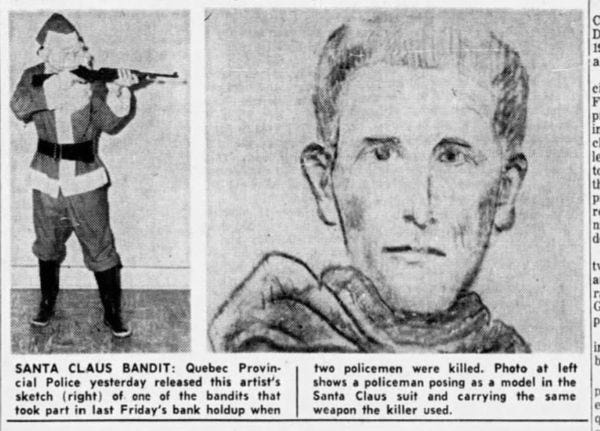
The Canadian Imperial Bank had a reputation for being robbed. In fact, this was the third robbery since the beginning of 1962 — in June 1962 for $24,000 and again in October for $3,500.
This “holdup man’s dream”, as one paper put it, attracted criminals because of its prime location, next to a four-lane highway, and having multiple escape routes. The bank also had many false alarms in the past — 400 in total — and because of this, police weren’t usually in a hurry to respond.
However, the holdup on December 14, 1962, would be the first time in the bank’s history that responding police — both of them — would be shot and killed.
Constable Claude Marineau, 34, wasn’t even supposed to be at work, much less responding to an active robbery. Earlier in the week, he had traded his next day shift out with another officer; it was Claude’s daughter’s birthday, and he was excited to watch her blow out her ten candles.
Coming from the other direction was Constable Denis Brabant, 30. He responded quickly when he heard that the silent alarm had gone off.
Both officers were friends and happily married men who may have expected some excitement, but surely not to be killed.
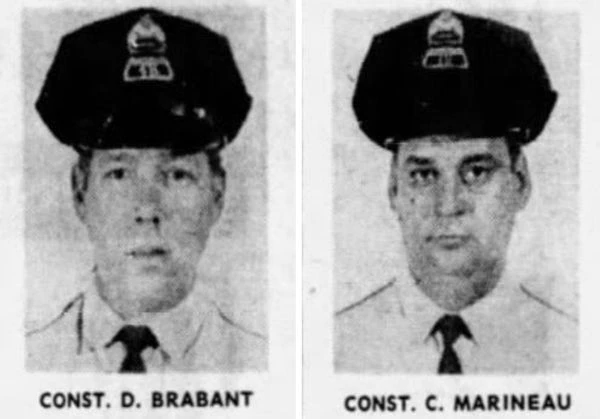
Santa’s elves were becoming inpatient. “Hurry up, you’re taking too long,” one of them shouted. “The police are coming!” said the other, looking out the front door.
Outside, both Denis Brabant and Claude Marineau had taken defensive positions behind their squad cars. Seconds later, bullets penetrated the steel automobile paneling, keeping the two men from approaching the bank. Even the ambulance wasn’t immune to the barrage of full-metal jackets being fired into it.

As the ambulance pulled up some sixty feet from the bank, the bandits opened fire on it. The detonations sent office workers on the second floor scurrying from their desks to the front windows. Three people standing in the parking area ducked for cover. Bullets tore through the ambulance from the undercarriage to the root. “It’s a real holdup.” — Macleans 1 June 1963
Constable Brabant was the first to get shot, the slug ripping through his thigh and exiting out the posterior side. On-lookers could hear painful groaning coming from the officer as he attempted to crawl to a secure spot between his car and the ambulance.
The officer was down, unarmed, and posed no threat to Santa’s heist; he was defenseless. As the shooting Santa approached his blood-soaked body, Brabant thought about his wife and three beautiful children who waited for him to return home that Friday night. They had planned to put the last few ornaments on their Christmas tree and sit by the fire. Christmas would never be the same for the Brabant family, each year a somber reminder of this terrible event.
Then, as the petrified faces in the windows looked on, he sprang around the truck, stood over the prone policeman, and continued firing. Metal-jacketed bullets tore through the officer’s body.
Constable Claude Marineau was next in line to die. He had just watched his best friend be executed and knew he was next. They had already shot him twice, the pavement goopy with his blood. Marineau most likely thought about his wife and kids too, about how he would never get to see his daughter blow out her ten candles.
Again on-lookers watched in utter shock as the mad man dressed up as Santa Claus raised up his rifle muzzle and squeezed off more rounds into the constable’s body.
Another family ruined out of senseless violence.
Tracking Santa
At the press conference, the Montreal Director of Police, Adrien Robert, vowed to track down and “rid our society of these determined criminals” by instructing his officers to “shoot on sight” if necessary. Robert demanded the heads of these three bandits and would stop at nothing to find them.
This sparked the nationwide manhunt with over two-hundred police officers hell-bent on fulfilling their boss’s request. Each night club, gambling den, restaurant, poolroom, and gentlemen’s club were raided within a few short days; and then raided again. Before the manhunt ended, over 2,500 citizens were dragged in for questioning.
“Each night we arrive, the crowds are thinner. Pretty soon, there will be nobody around at all.” Replied a leathery old detective whose face is as familiar on the Main as French-fried potatoes: “The people who make their living from the night spots are a hell of a lot sorer at the Santa Claus gang than they are at us.” — Montreal Detective Doug Stone.
They roughed known criminals until the officers were sure they had no information to share, but noticed most were more than happy to support.
One local kingpin was so outraged by the execution that he sent a message to the police commissioner:
“Only dogs would do a thing like that. They’ll get no protection from us, I promise you. If we find out who they are, we’ll turn them over to you.” — local kingpin.
Goofballs
Jules Reeve, 30, would have died in his attic room of Hochelaga Street had it not been for the housekeeper downstairs who heard him fall. Reeve was rushed to the hospital where doctors determined he had a blood clot on the brain, caused by an “excessive consumption of goofballs.” Goofballs are a combination of meth and heroin.
Inside Jules’ pocket, doctors pulled out $1,297 in cash, an excessive amount for someone living in an attic apartment. The police were called in, but Reeve, one of the stick-up elves, decided not to snitch out his counterparts. It was only a matter of time though before the rest of the gang was captured.
Georges Marcotte, 35, fit the Santa suit perfectly, having had it tailored before robbing the Canadian Imperial Bank. Together with former prison inmate Jean-Paul Fournel, 39, and Jules Reeve, 30, they had been planning the bank robbery for months. Killing two police officers was never part of the plan.
Within weeks, all three men were tracked down and charged with the robbery and murder of the two constables. Unfortunately, not all the charges would stick.

All three men served prison time for their roles in the robbery. Marcotte, the Santa executioner, received the death penalty, but because of some court mishaps, was downgraded to life in prison — of which he spent a measly twenty years.
Merry Christmas, ya filthy animals.


